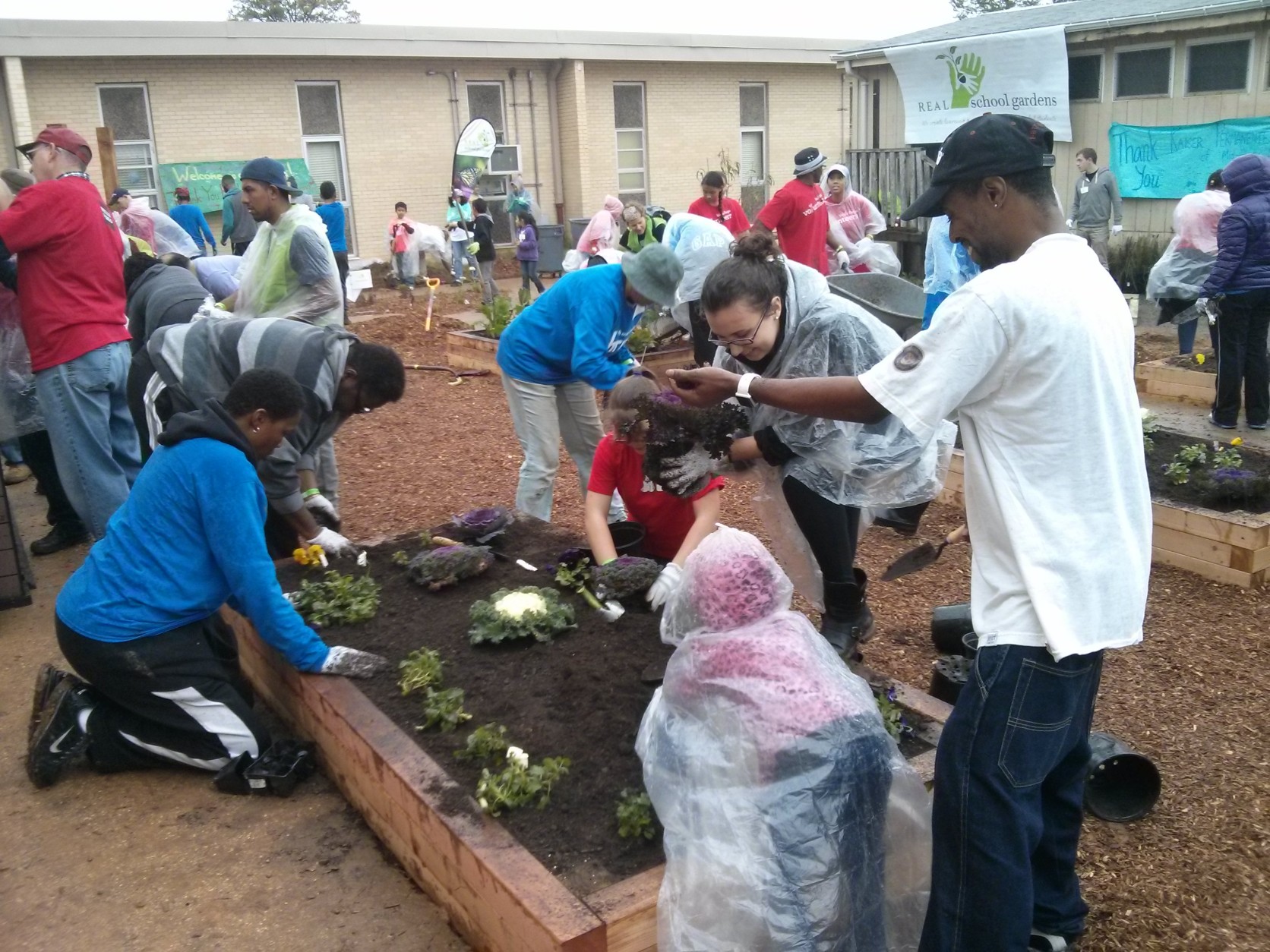
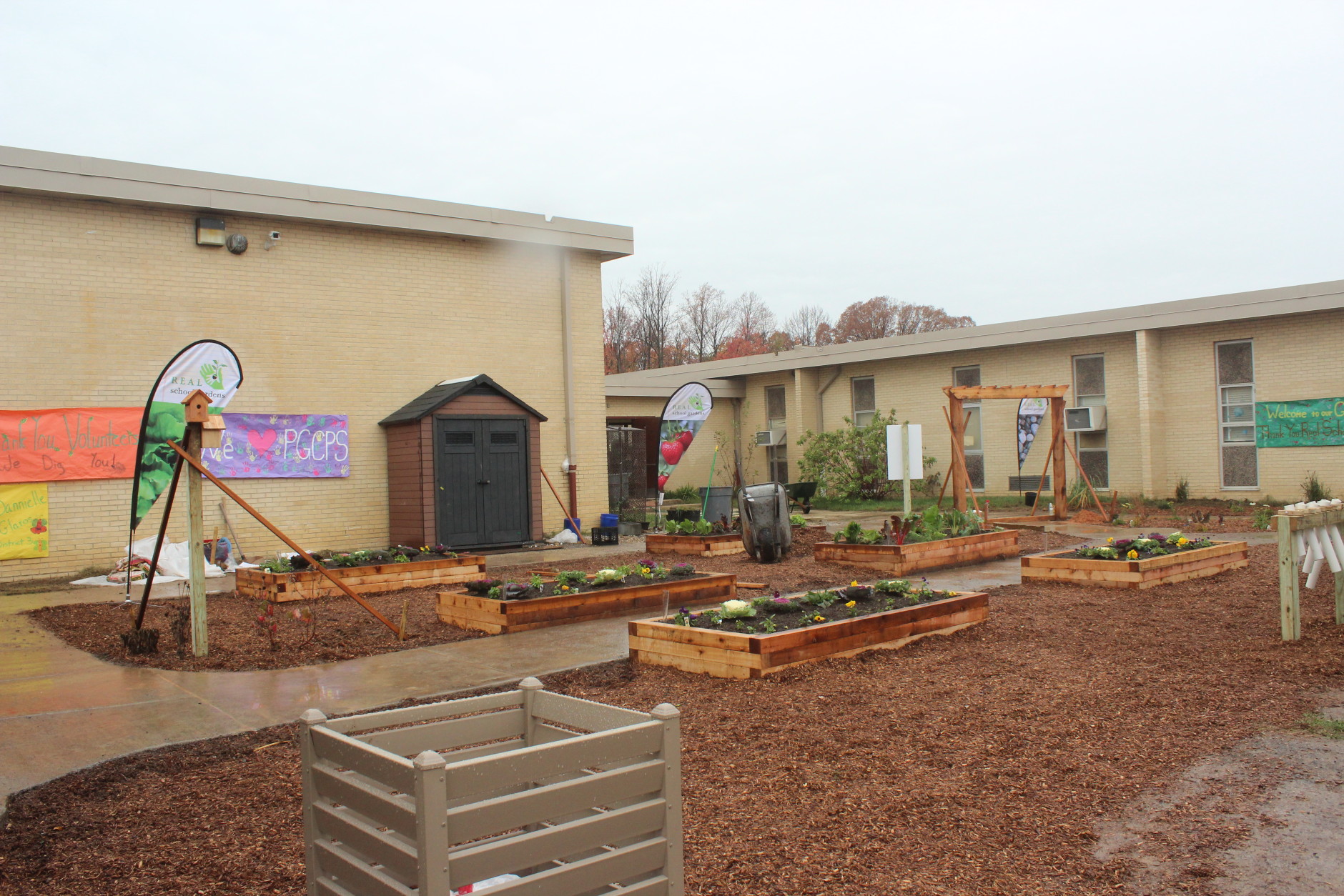
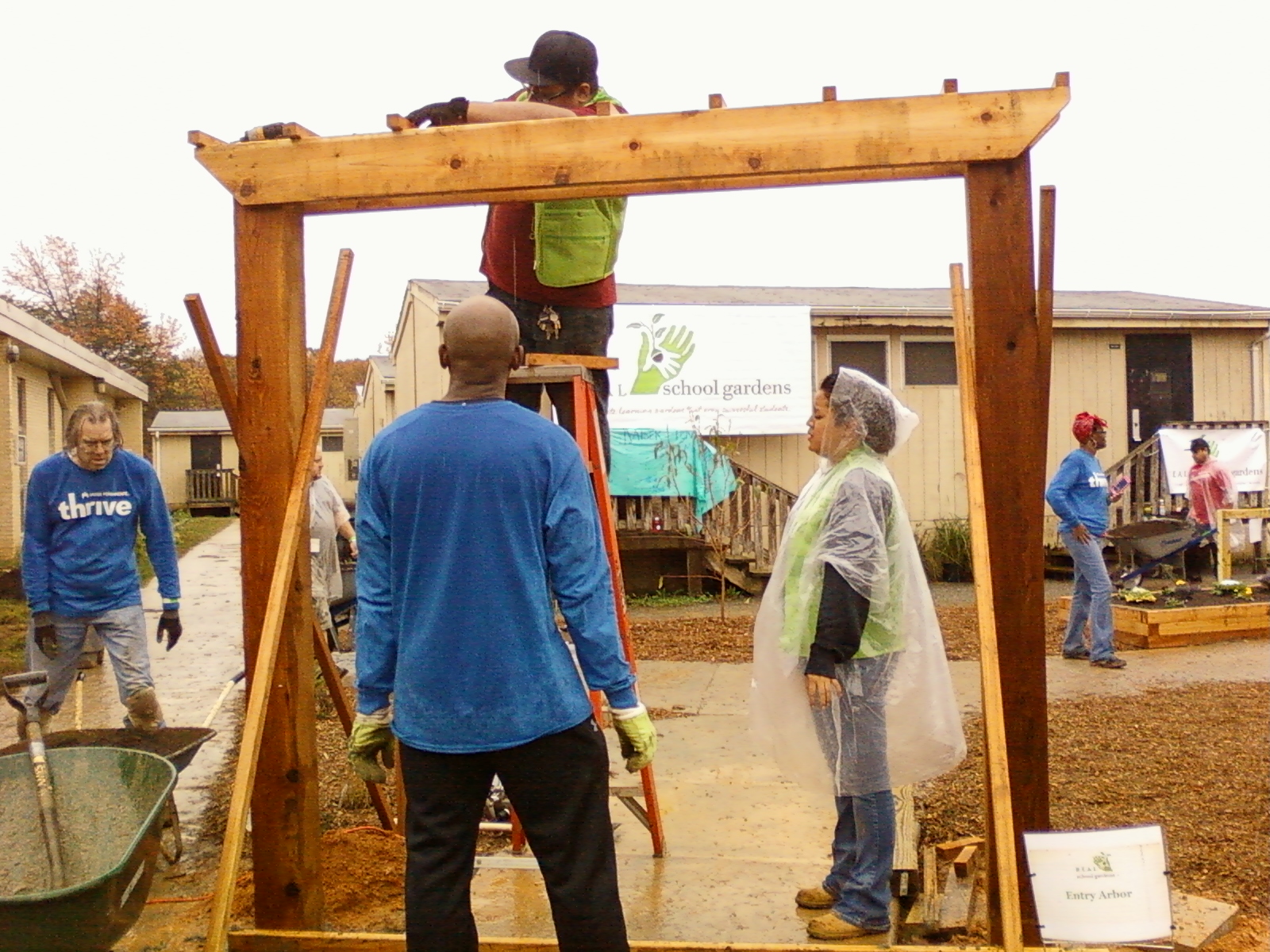
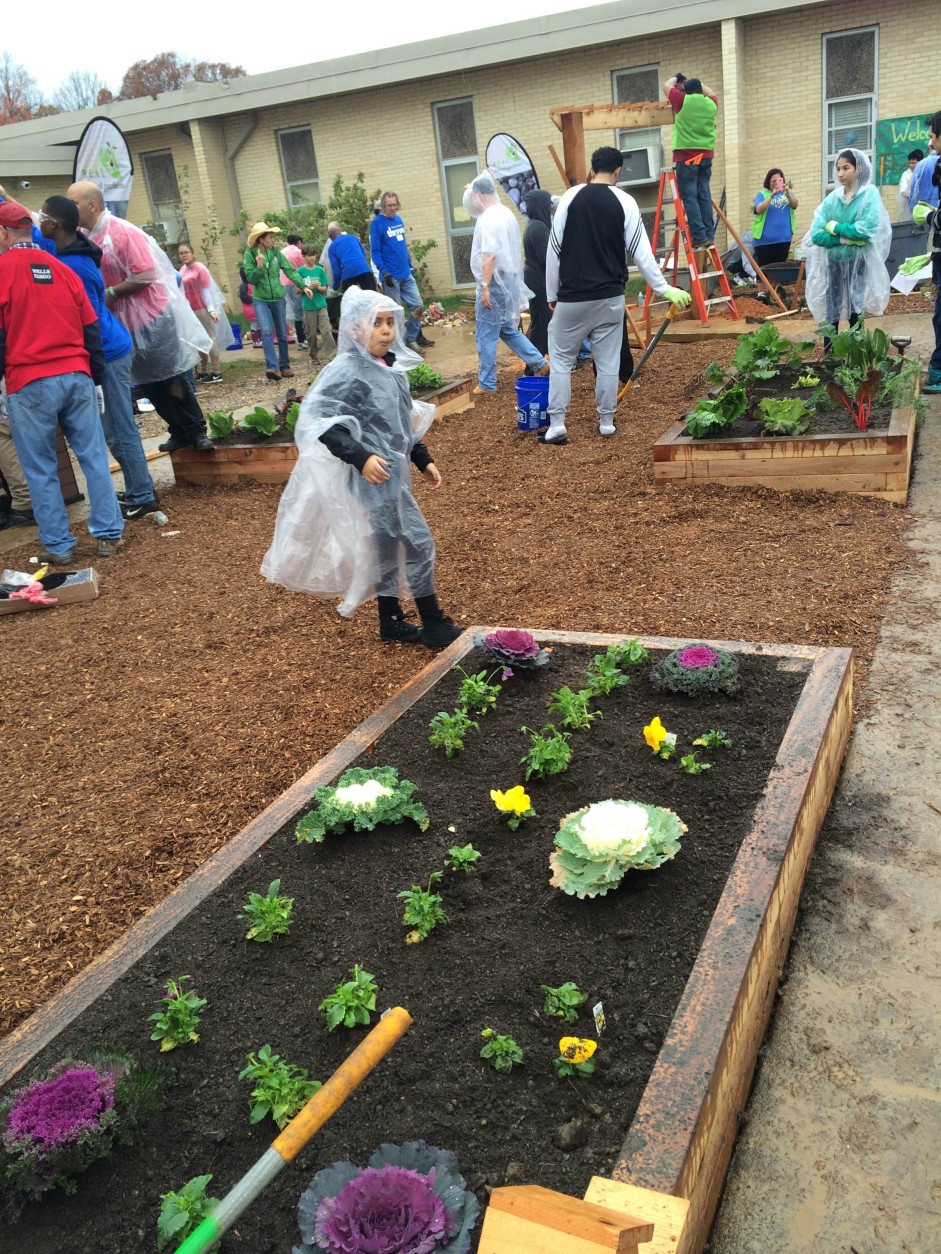
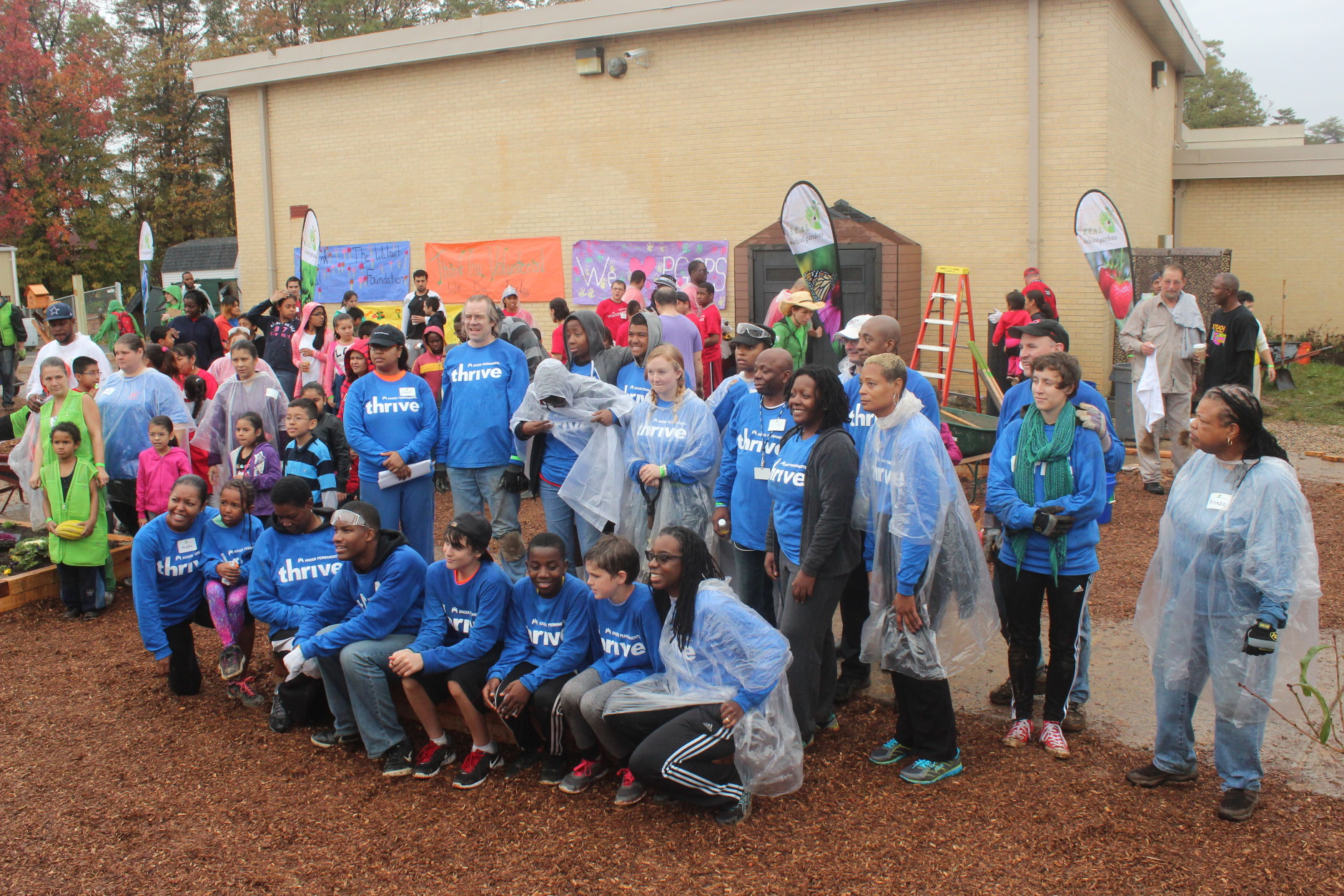
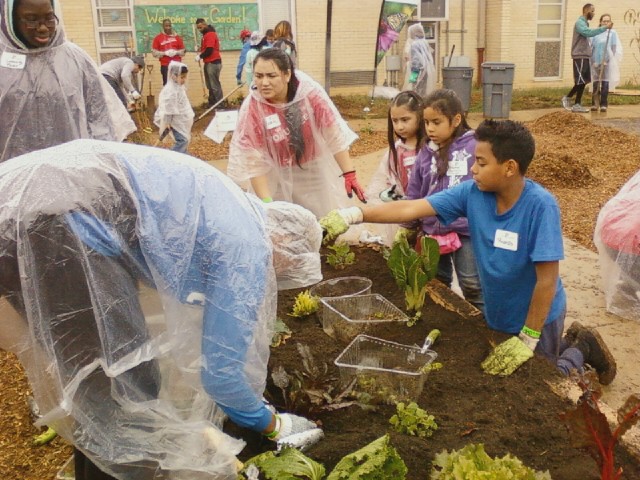
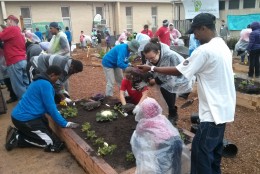
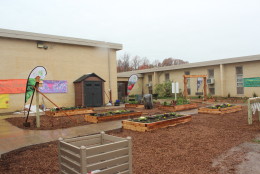
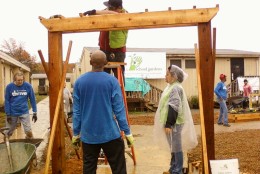
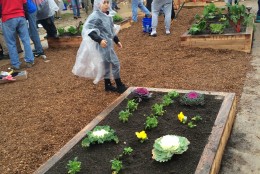
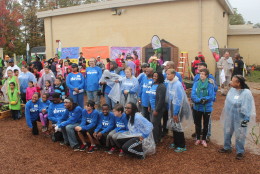
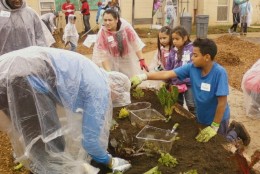
WASHINGTON — There is no carpet, no ceiling and no desks inside Beacon Heights Elementary School’s newest classroom.
Instead, there are mulched plots, raised vegetable beds and tree stumps that serve as seats.
The Prince George’s County school is the first D.C.-area school to partner with the nonprofit organization REAL School Gardens to design and build an outdoor “learning garden.”
“School gardens are rising in popularity across the United States, which is just fantastic, but often times the gardens are underutilized,” says REAL School Gardens CEO Jeanne McCarty.
A school garden doesn’t have to end with a collection of vegetable plants. Similar to a computer lab or school library, McCarty says outdoor spaces can be an additional resource for teachers: “Something teachers can use to get kids more engaged in math lessons, more engaged in science and more inspired in language arts.”
Over the past 10 years, REAL School Gardens has built 100 learning gardens in low-income areas across the nation, and the organization has plans to work with nine additional schools in the D.C. area in the upcoming year.
On Saturday, more than 100 people from Beacon Heights and the surrounding community came out for the school’s “big dig.” Volunteers erected the garden’s arbor entryway, set up a music learning center and laid plans for a weather station and an ivy-covered bird habitat.
Beacon Heights Principal Lynne Stuewe says the new garden is the perfect place for students and teachers to connect cross-curricular content, such as a social studies chapter on how Native Americans grew their own food with a science lesson on soil composition and photosynthesis.
“Students always do better when they have real tangibles to look at and see how things connect with one another,” she says. “With the garden, they get to have a bigger picture of what everything entails.”
Outdoor classrooms offer a change of scenery and a break from long days spent cooped up in small desks, but they’re helping to improve test scores.
According to data collected by REAL School Gardens, schools with learning gardens saw a 12 to 15 percent increase in standardized test score pass rates, and 94 percent of teachers reported increased student engagement.
McCarty says she’s also seen “amazing results” among teachers. Morale and job satisfaction nearly doubled with the gardens, and 90 percent of teachers who use the gardens reported feeling prepared to help their students succeed academically.
Stuewe believes Beacon Heights’ new garden will benefit everyone in her school, but she is most excited to see how her English language learners, or ELL students, utilize the classroom’s interactive features. More than 260 students out of 500 at the Riverdale, Maryland elementary school are ELL.
“This is really going to be helpful for them,” she says. “There are so many connections that are going to be made; I just think my kids are going to be better for it.”
The garden may have gone up in a day, but Stuewe says the process took about a year. After applying for a partnership with REAL School Gardens, the nonprofit connected Beacon Heights with two corporate sponsors to help fund a large portion of the project.
Last May, the school’s students had an opportunity to get their hands dirty in the planning process with a garden design contest, which helped to decide all of the learning elements included in the space.
“It is a full design that feels like a classroom space,” McCarty says about the learning garden, adding that there are even operational elements, such as a white board, to make it easier for teachers to hold lessons outside.
After a garden is built, REAL School Gardens sticks around for three years to continue professional and curriculum development with the teachers in its partner schools. And McCarty says the learning starts right away.
“We don’t want any pause. We get so much enthusiasm around the build, we want teachers to go straight into utilizing that learning garden and we help make that happen.”
Stuewe says her school has always been active in gardening and teachers have been receptive to holding class outside, but the new learning garden is an opportunity to take that interest to the next level.
“Now I’m really excited that they’ll have a place to go,” she says.







